Original Author Mark Haddon. Adapted by Simon Stephens. Directed by Hannah Goodwin
A superb feather in Belvoir’s cap as it establishes a means of inclusive performance making in theatrical seasons to come
Reviewed by Justin Clarke
Belvoir St, Surry Hills
Until 22nd September, 2024
Tickets: https://belvoir.com.au/productions/curious-incident/
I first saw Simon Stephen’s The Curious Incident of the Dog in the Night-Time on the West End in 2016. By then it had won a staggering seven Olivier Awards as well as the hearts of audiences internationally as it eventually went on tour, arriving in Sydney with the UK cast in 2018. It was the first production I’d seen that positioned a lead character with autism in the spotlight, presenting what is, on paper, a small journey into something mammoth in size and proportion.
This would lead me to read the book from which it was adapted. Mark Haddon’s novel, again the first text I’d read that was told from the neurological perspective of a character like Christopher. The stark difference between the two was stunning. On paper, Christopher’s triggers and autism were depicted as an annoyance to those around him, not a superpower. His obsession to find the answer to the dead dog in his neighbours front yard merely a catalyst for ableist language, yet told in a clear, factual and unique perspective for a novel to be written. In comparison, Stephen’s stage adaption was grandiose and magical, its use of projections and stage magic bringing Christopher’s neurodiversity off the page and blown into a theatrical scale.
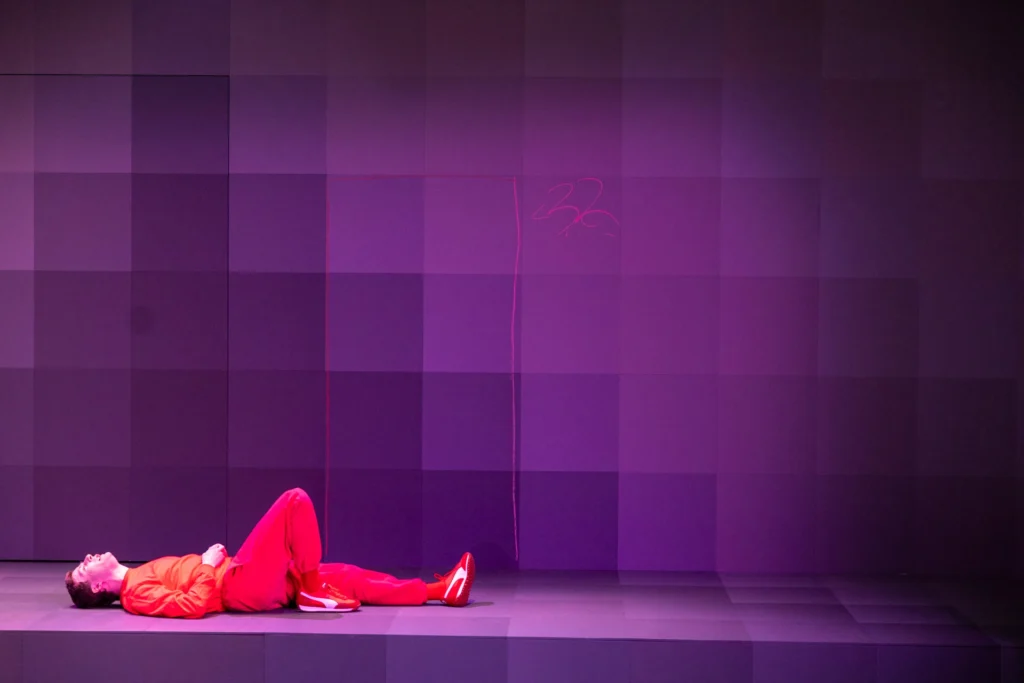
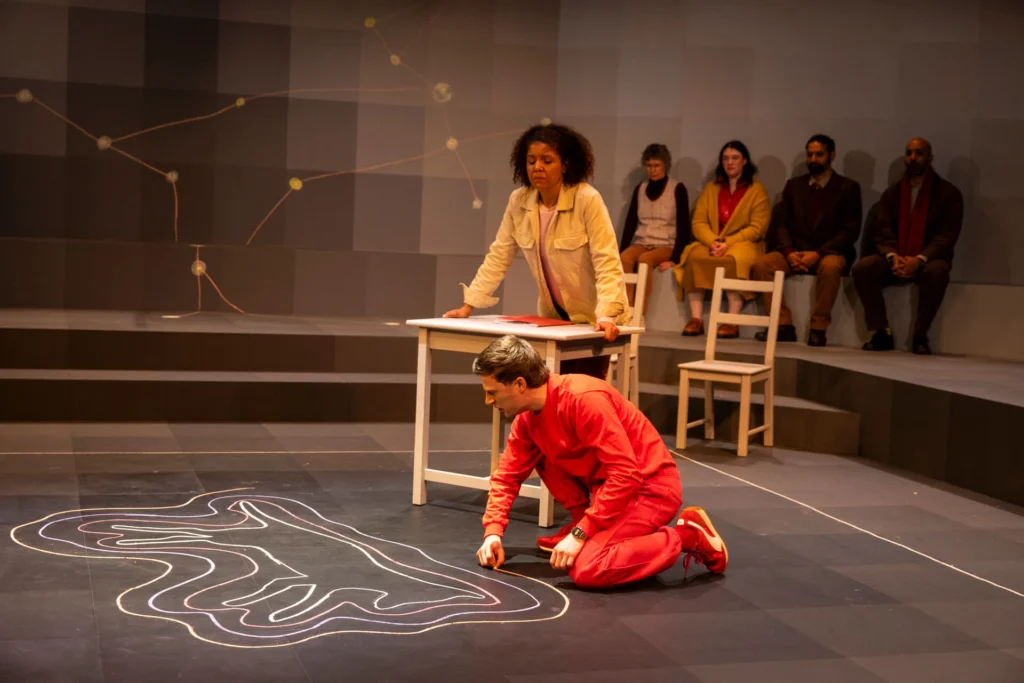

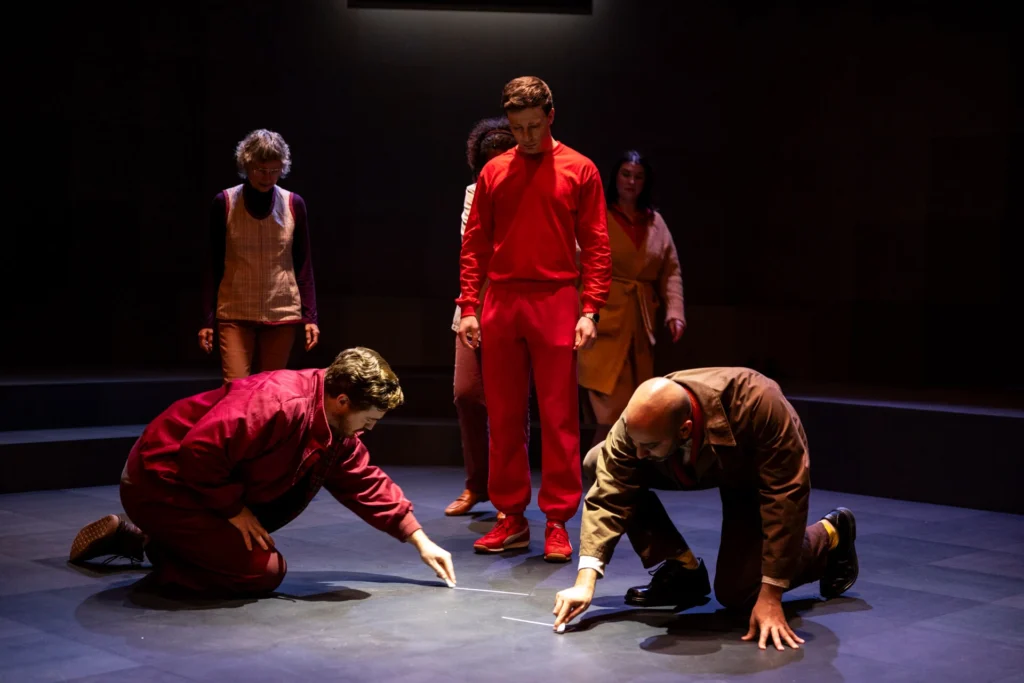
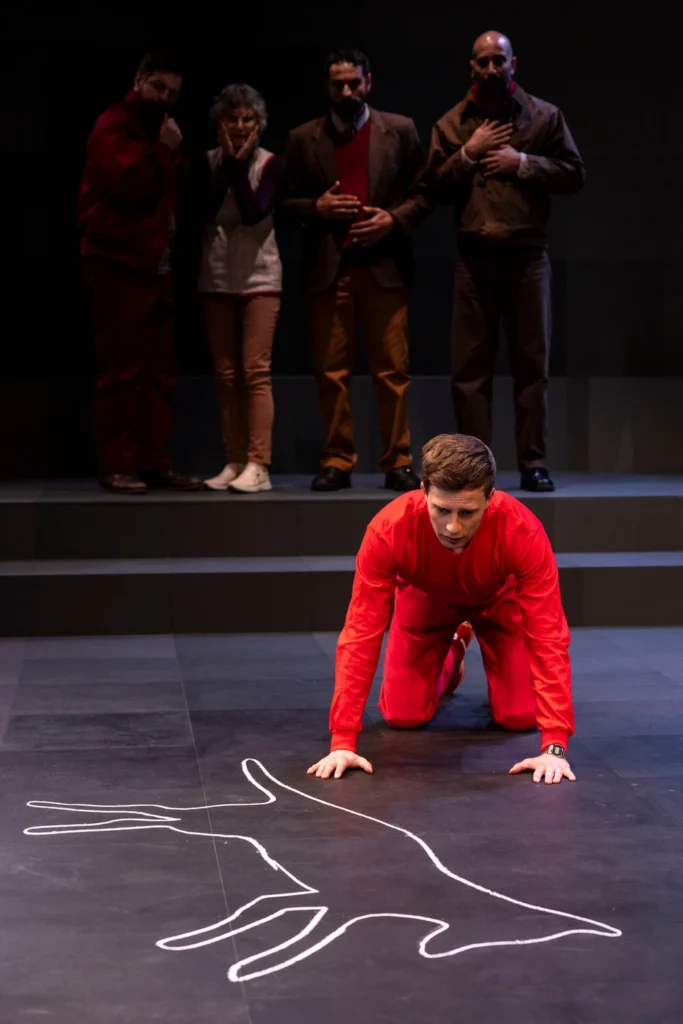
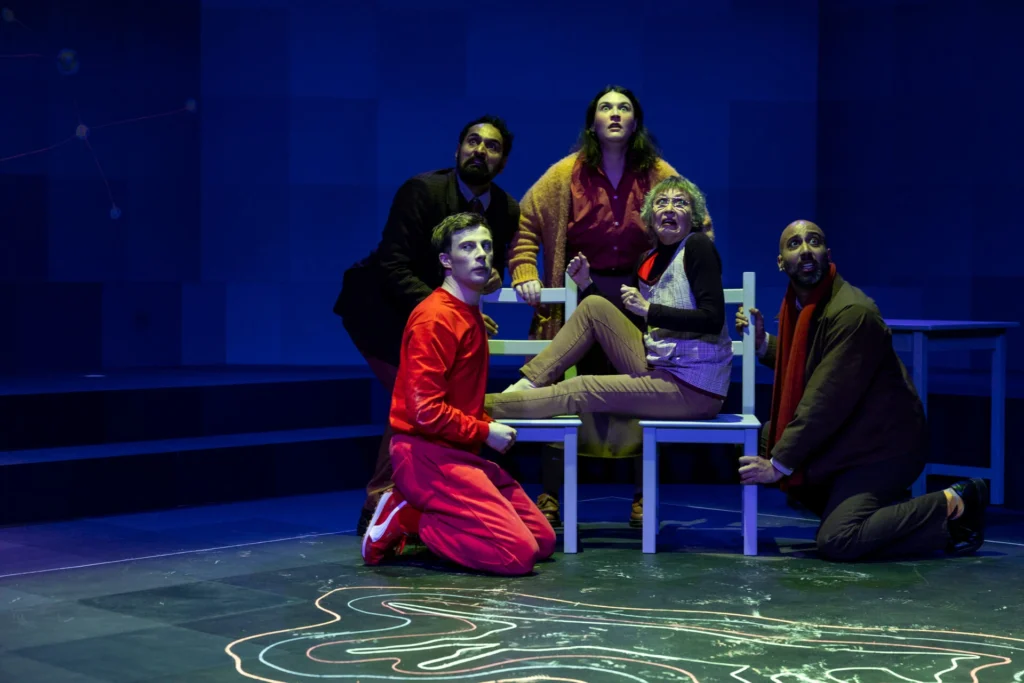
The Curious Incident of the Dog in the Night-Time, Belvoir St (2024). Images by Brett Boardman
The current production at Belvoir St, under the direction of Hannah Goodwin, takes the learned and lived experiences of the neurodiverse community, bringing great care and simplicity into what is a genuinely touching and celebratory piece of theatre.
Zoë Atkinson’ set provides a simple tiered playground for the action to take place. The walls and floor are organised in squares of varying shades of grey. At times, it creates a sensory pattern in the wall when your eyes drift around the action taking place, forming their own shapes in space. Kelsey Lee’s lighting design meanwhile is simplistic and softly understated. It ties into the care taken to be aware of the sensory triggers and relaxed atmosphere which are built into the foundations of the production.
In true Belvoir style, they have set an example on how we can make theatre more inclusive
In lieu of high-flying rigs and projections, Christopher’s imagination is brought to life mostly by chalk drawings. It highlights the fast connections he makes in his brain, and exhibits a playfulness to the who-dunnit mystery he’s set himself to solve. This is continued in the puppetry used to bring animals on the stage to life, and the swapping of Atkinson’s costumes as the ensemble, literally, take on different hats.
A lull in energy in the second act stumbles the runtime of the production as the play progresses to its end. After the trajectory of Christopher’s journey reaches its climax, the production seems to meander towards its final lines.
A print out in the foyer of the particular moments that could trigger neurodiverse audiences is provided, meanwhile we’re told of the countdown utilised by the automated electronic display fold in the back wall of the set to prepare us for moments of overloading sounds and movement. The cast indicates to us which senses could be triggered by covering their ears or eyes when the countdown starts.
It was off-putting to hear audience members laughing at this at the beginning, as though it were the start of a pantomime, with a woman nearby uttering, “They’re not seriously going to do that are they?” All of which prove a point being made through Goodwin’s direction: How aware of accessible theatre are audience members, and how do we make this a regular occurrence for an inclusive environment?
In true Belvoir style, they have set an example on how we can make theatre more inclusive, stripping away from the ableism which so often goes hand in hand with elitism in the industry and highlighting the power in employing creatives with relevant authentic, lived experience. Could we be seeing QR Codes in foyers with a breakdown of pre-show information and red-light countdowns in future productions? Or will this merely exist for this individual production which focuses on a neurodiverse character’s world?
As Christopher, Daniel R. Nixon is joyously loveable in his depiction of the 15-year old boy. His love for Sherlock Holmes and his pet rat is infectious. We see Christopher’s world played out through the purposeful movements and intonations of Nixon’s character work. At times, it feels overplayed for the space, but the inherent truthfulness in Christopher gives the character what Mark Haddon doesn’t, a superpower.
A simplistic, yet devoted production is brought to life with authenticity that is embedded into its very core
Supported by the rest of the cast of Curious Incident we see multiple characters take shape. Nicholas Brown as Mr Shears, Roy Joseph as a Policeman, Tracy Mann as Mrs Alexander, Brandon McClelland as Christopher’s father, Ed, Matilda Ridgway as Mother, Judy, Ariadne Sgouros as Mrs Shears, and Brigid Zengeni as sometimes narrator and therapist, Siobhan. At times they all watch from the sidelines, casting all our eyes back to Christopher at any given moment. This is his story. This is his spotlight.
In contrast to the West End staging, both McClelland and Ridgway bring a depth of emotion to their relationship with Christopher, a skill which Goodwin excels at within her productions. Roy’s love for his son is evidently deep, and Judy’s immediacy at the reconnection with her son softens her flawed character.
The Curious Incident of the Dog in the Night-Time is a superb feather in Belvoir’s cap as it establishes a means of inclusive performance making in theatrical seasons to come. A simplistic, yet devoted production is brought to life with authenticity and commitment that is embedded into its very core, making for a unique theatrical experience that exudes warmth and heart.
TEAM
Mark Haddon Original Author
Simon Stephens Adapter
Hannah Goodwin Director
A cast of 8 including
Nicholas Brown MR SHEARS and OTHERS
Roy Joseph POLICEMAN and OTHERS
Tracy Mann MRS ALEXANDER and OTHERS
Brandon McClelland ED
Daniel R. Nixon CHRISTOPHER
Matilda Ridgway JUDY
Ariadne Sgouros MRS SHEARS and OTHERS
Brigid Zengeni SIOBHAN
Creatives
Zoë Atkinson Set and Costume Designer
Kelsey Lee Lighting Designer
Alyx Dennison Composer and Sound Designer
Elle Evangelista Choreographer
Tim Dashwood Movement Director
Nigel Poulton Movement Director
Alice Osborne Puppetry Director
Laura Farrell Vocal Coach
Margaret Thanos Assistant Director
Luke McGettigan Stage Manager
Zoe Davis Assistant Stage Manager
Sarah Carroll Access Coordinator








